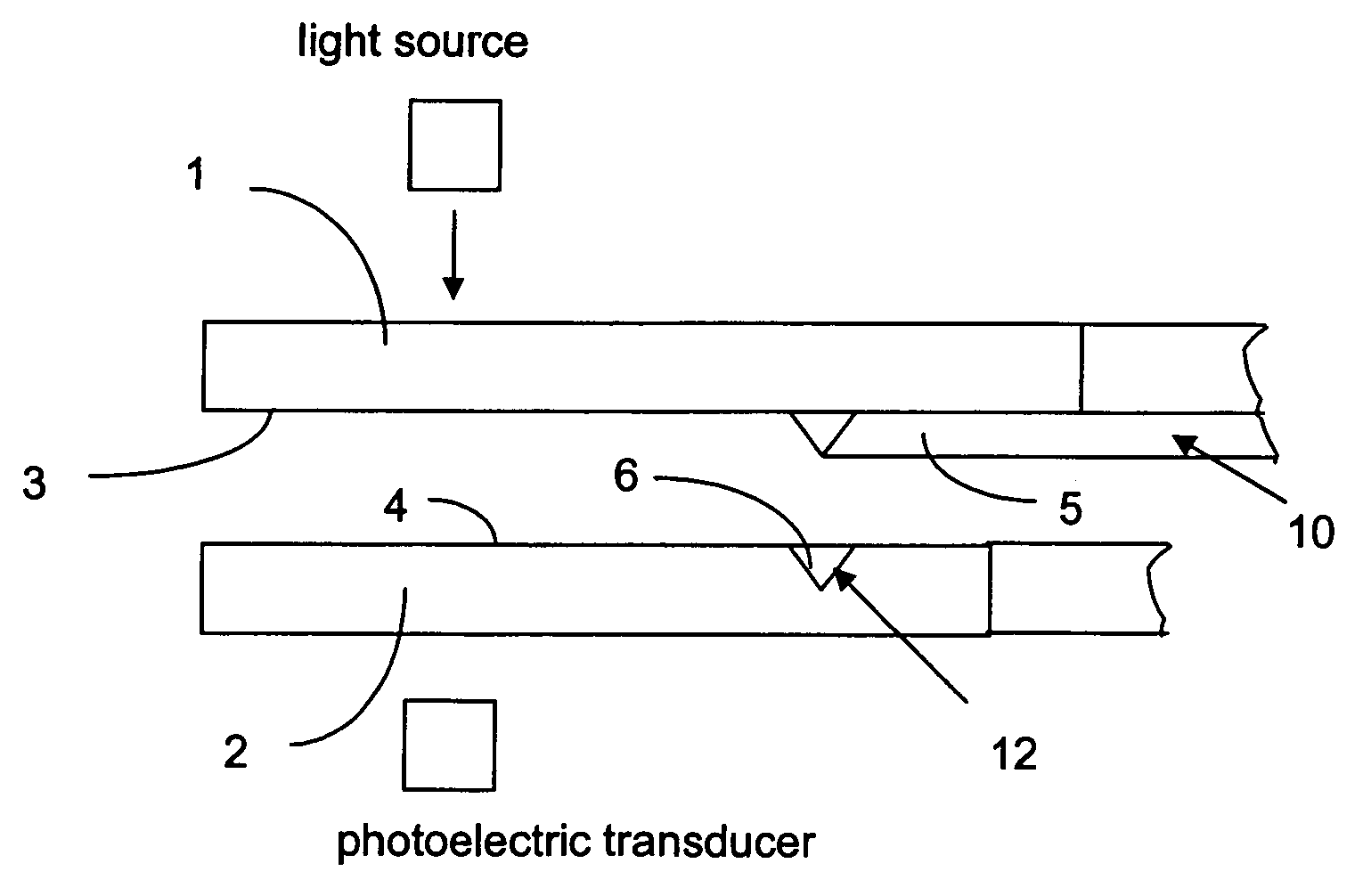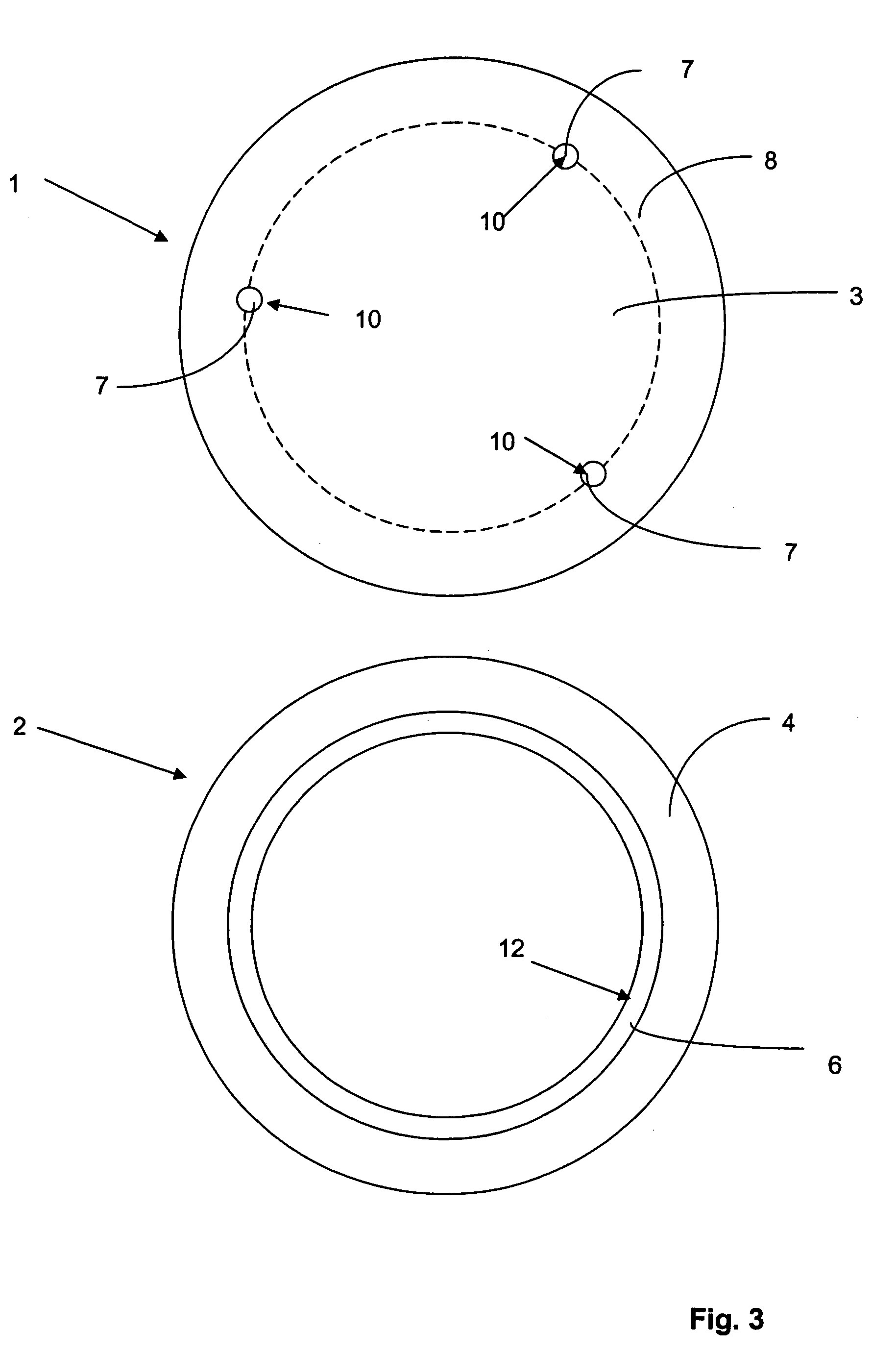Optical angle sensor
a technology of optical/electrical converter and angle sensor, which is applied in the direction of measuring apparatus bearing/suspension, application, electrical/magnetic means, etc., can solve the problems of high mechanical support and the required precision mechanics, relative high cost and high cost of mechanical support, and achieves the effect of small distance between the rotating member and the static or stationary member and/or the optical/electrical converter
- Summary
- Abstract
- Description
- Claims
- Application Information
AI Technical Summary
Benefits of technology
Problems solved by technology
Method used
Image
Examples
Embodiment Construction
[0024]A rotary angle sensor according to the invention has a first measurement member 1 that is able to move in a measurement direction and a second, static measurement member 2. By measuring the motion of measurement member 1 relative to the measurement member 2, a rotary angle can be determined, as has long been known.
[0025]According to the invention, the measurement members 1 and 2 lie with a certain spacing on top of each other, a bottom side 3 of the first measurement member 1 being opposite a top side 4 of the second measurement member 2. To assure that measurement members 1 and 2 are concentric to each other in every angular position and independently of any shaft bearing, a guide between measurement members 1 and 2 maintains them concentric with respect to each other.
[0026]The guide consists of a guide element 10 projecting from bottom side 3 of the first measurement member 1 and a guide recess 12 provided on top side 4 of the second measurement member 2, in which the guide ...
PUM
 Login to View More
Login to View More Abstract
Description
Claims
Application Information
 Login to View More
Login to View More - R&D
- Intellectual Property
- Life Sciences
- Materials
- Tech Scout
- Unparalleled Data Quality
- Higher Quality Content
- 60% Fewer Hallucinations
Browse by: Latest US Patents, China's latest patents, Technical Efficacy Thesaurus, Application Domain, Technology Topic, Popular Technical Reports.
© 2025 PatSnap. All rights reserved.Legal|Privacy policy|Modern Slavery Act Transparency Statement|Sitemap|About US| Contact US: help@patsnap.com



